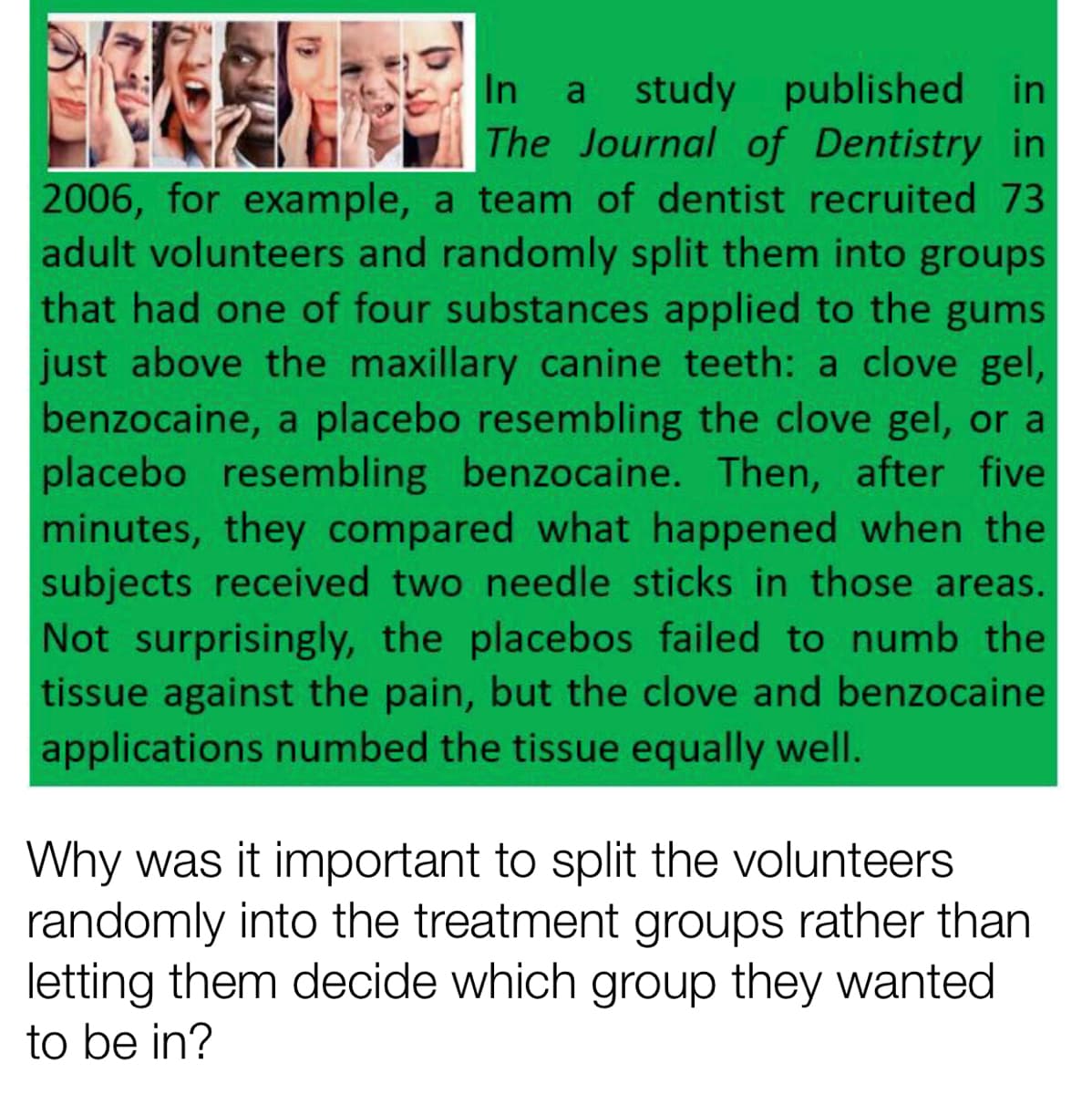In a study published in The Journal of Dentistry in 2006, for example, a team of dentist recruited 73 adult volunteers and randomly split them into groups that had one of four substances applied to the gums just above the maxillary canine teeth: a clove gel, benzocaine, a placebo resembling the clove gel, or a placebo resembling benzocaine. Then, after five minutes, they compared what happened when the subjects received two needle sticks in those areas. Not surprisingly, the placebos failed to numb the tissue against the pain, but the clove and benzocaine applications numbed the tissue equally well. Why was it important to split the volunteers randomly into the treatment groups rather than letting them decide which group they wanted to be in?
In a study published in The Journal of Dentistry in 2006, for example, a team of dentist recruited 73 adult volunteers and randomly split them into groups that had one of four substances applied to the gums just above the maxillary canine teeth: a clove gel, benzocaine, a placebo resembling the clove gel, or a placebo resembling benzocaine. Then, after five minutes, they compared what happened when the subjects received two needle sticks in those areas. Not surprisingly, the placebos failed to numb the tissue against the pain, but the clove and benzocaine applications numbed the tissue equally well. Why was it important to split the volunteers randomly into the treatment groups rather than letting them decide which group they wanted to be in?
A First Course in Probability (10th Edition)
10th Edition
ISBN:9780134753119
Author:Sheldon Ross
Publisher:Sheldon Ross
Chapter1: Combinatorial Analysis
Section: Chapter Questions
Problem 1.1P: a. How many different 7-place license plates are possible if the first 2 places are for letters and...
Related questions
Question

Transcribed Image Text:a study published in
The Journal of Dentistry in
2006, for example, a team of dentist recruited 73
adult volunteers and randomly split them into groups
that had one of four substances applied to the gums
just above the maxillary canine teeth: a clove gel,
benzocaine, a placebo resembling the clove gel, or a
placebo resembling benzocaine. Then, after five
minutes, they compared what happened when the
subjects received two needle sticks in those areas.
Not surprisingly, the placebos failed to numb the
tissue against the pain, but the clove and benzocaine
applications numbed the tissue equally well.
Why was it important to split the volunteers
randomly into the treatment groups rather than
letting them decide which group they wanted
to be in?
Expert Solution
This question has been solved!
Explore an expertly crafted, step-by-step solution for a thorough understanding of key concepts.
Step by step
Solved in 2 steps

Recommended textbooks for you

A First Course in Probability (10th Edition)
Probability
ISBN:
9780134753119
Author:
Sheldon Ross
Publisher:
PEARSON


A First Course in Probability (10th Edition)
Probability
ISBN:
9780134753119
Author:
Sheldon Ross
Publisher:
PEARSON
